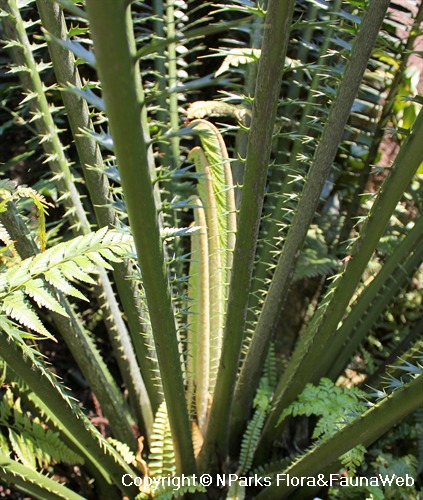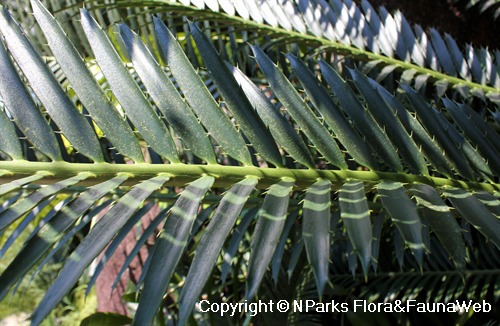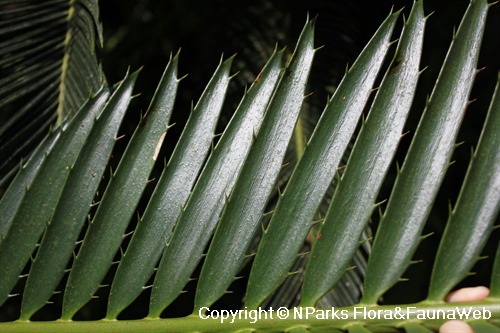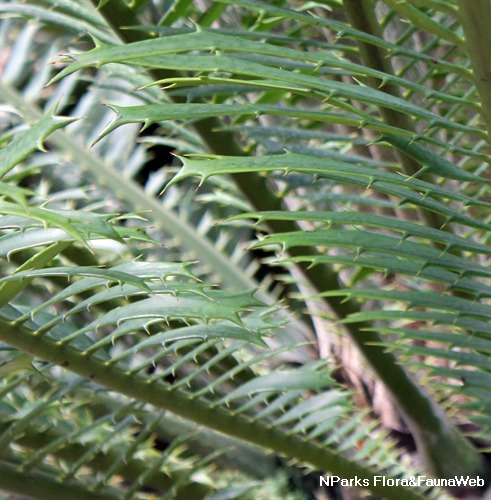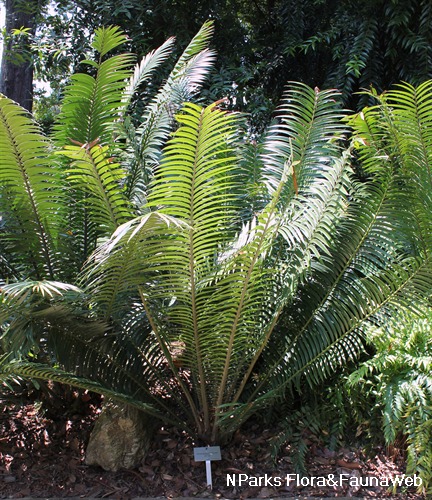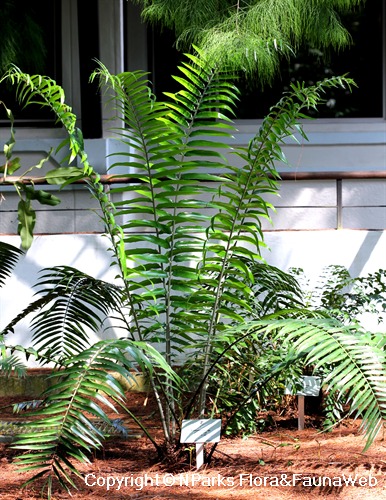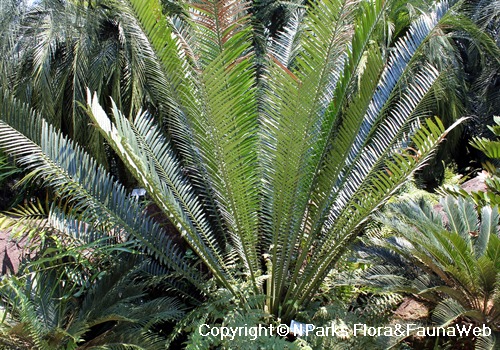
Back
Encephalartos whitelockii P.J.H.Hurter
| Family Name: | Zamiaceae |
| Synonyms: | Encephalartos successibus successibus |
Name
Classifications and Characteristics
| Plant Division | Gymnosperms (Non-Flowering Seed Plants) (Cycad) |
|---|---|
| Plant Growth Form | Cycad |
| Lifespan (in Singapore) | Perennial |
Biogeography
| Native Distribution | Uganda, Africa |
|---|---|
| Native Habitat | Terrestrial |
| CITES Protection | True (Appendix I) |
Description and Ethnobotany
| Foliage | Rigid, upright, up to 4m long, forms large clumps, slightly keeled, sometimes curved slightly backward and downward at the apex. Petiole straight, with 6-12 prickles, swollen at the base. Leaf-base collar not present; basal leaflets reducing to spines. Leaflets lanceolate, discolorous; margin flat, heavily toothed. |
|---|---|
| Stems | Arborescent, often suckering from the base to form clumps, up to 3.5m long. Old leaf bases persisting on the crown. |
| Habitat | Found in forest along Mpanga River, Western Uganda, it grows on Cliffs or steep rocky hillside at an elevation of about 1200m. Also occurs in dense evergreen montane forest. |
Landscaping Features
| Desirable Plant Features | Ornamental Form |
|---|---|
| Landscape Uses | Parks & Gardens, Focal Plant |
| Usage Hazard - Cons | Spines/Thorns - Leaf |
Plant Care and Propagation
| Light Preference | Full Sun |
|---|---|
| Water Preference | Moderate Water |
| Plant Growth Rate | Moderate, Slow |
| Rootzone Tolerance | Moist Soils, Well-Drained Soils |
| Propagation Method | Seed |
Foliar
| Foliage Retention | Evergreen |
|---|---|
| Mature Foliage Colour(s) | Green |
| Mature Foliage Texture(s) | Smooth, Glossy / Shiny |
| Prominent Young Flush Colour(s) | Green - Light Green |
| Young Flush Texture(s) | Smooth, Glossy / Shiny |
Fruit, Seed and Spore
| Plant Sexuality (non-Angiosperm) | Dioecious |
|---|
Image Repository
Others
| Master ID | 30771 |
|---|---|
| Species ID | 5111 |
| Flora Disclaimer | The information in this website has been compiled from reliable sources, such as reference works on medicinal plants. It is not a substitute for medical advice or treatment and NParks does not purport to provide any medical advice. Readers should always consult his/her physician before using or consuming a plant for medicinal purposes. |

